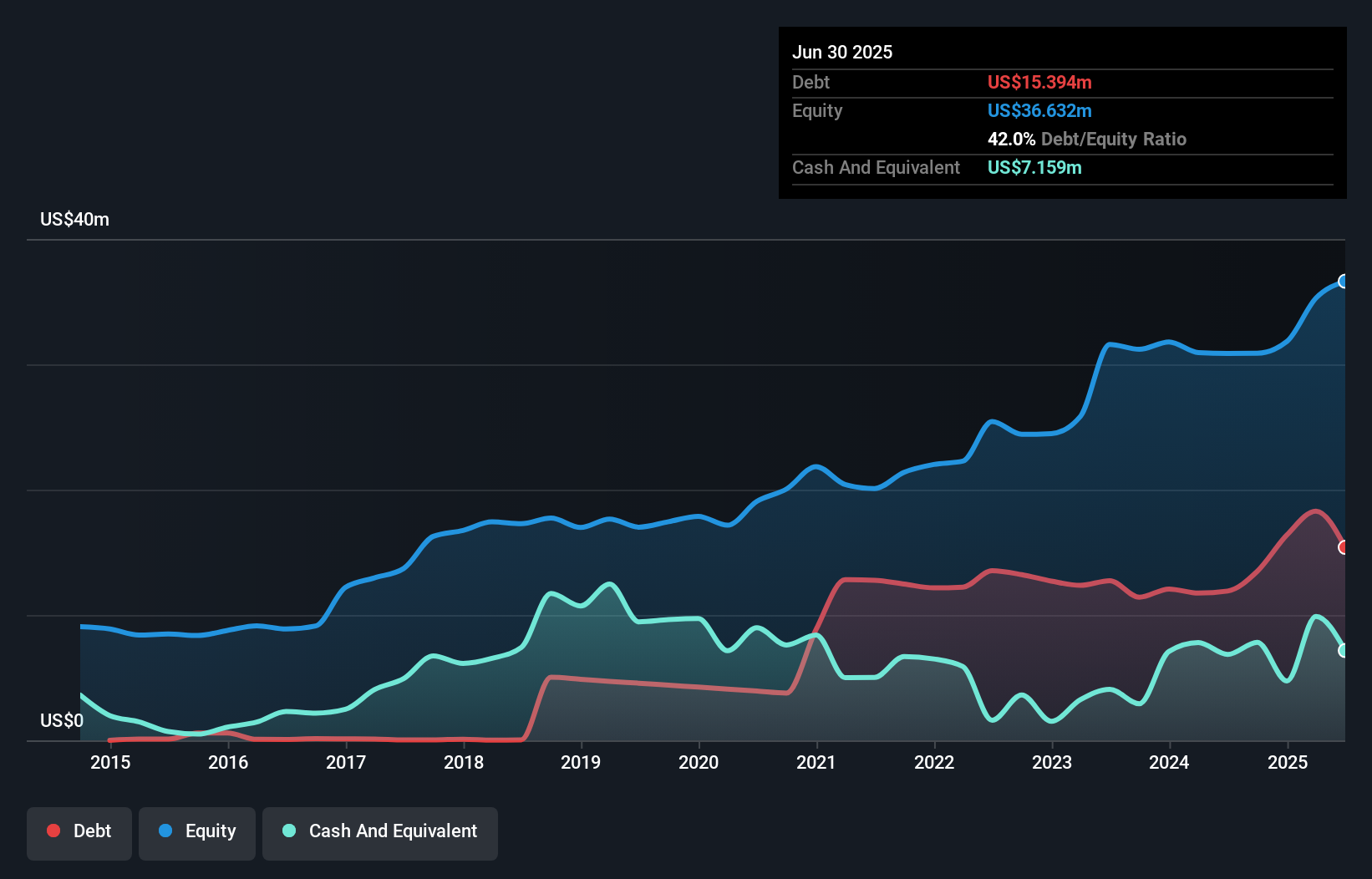- United States
- /
- Medical Equipment
- /
- NasdaqCM:PDEX
We Think Pro-Dex (NASDAQ:PDEX) Can Stay On Top Of Its Debt
Legendary fund manager Li Lu (who Charlie Munger backed) once said, 'The biggest investment risk is not the volatility of prices, but whether you will suffer a permanent loss of capital.' So it seems the smart money knows that debt - which is usually involved in bankruptcies - is a very important factor, when you assess how risky a company is. We can see that Pro-Dex, Inc. (NASDAQ:PDEX) does use debt in its business. But is this debt a concern to shareholders?
When Is Debt A Problem?
Debt and other liabilities become risky for a business when it cannot easily fulfill those obligations, either with free cash flow or by raising capital at an attractive price. Ultimately, if the company can't fulfill its legal obligations to repay debt, shareholders could walk away with nothing. While that is not too common, we often do see indebted companies permanently diluting shareholders because lenders force them to raise capital at a distressed price. Of course, debt can be an important tool in businesses, particularly capital heavy businesses. The first step when considering a company's debt levels is to consider its cash and debt together.
How Much Debt Does Pro-Dex Carry?
As you can see below, at the end of June 2025, Pro-Dex had US$15.4m of debt, up from US$11.9m a year ago. Click the image for more detail. However, because it has a cash reserve of US$7.16m, its net debt is less, at about US$8.24m.

How Strong Is Pro-Dex's Balance Sheet?
The latest balance sheet data shows that Pro-Dex had liabilities of US$14.6m due within a year, and liabilities of US$9.93m falling due after that. On the other hand, it had cash of US$7.16m and US$17.5m worth of receivables due within a year. So its total liabilities are just about perfectly matched by its shorter-term, liquid assets.
Having regard to Pro-Dex's size, it seems that its liquid assets are well balanced with its total liabilities. So while it's hard to imagine that the US$149.2m company is struggling for cash, we still think it's worth monitoring its balance sheet.
View our latest analysis for Pro-Dex
We measure a company's debt load relative to its earnings power by looking at its net debt divided by its earnings before interest, tax, depreciation, and amortization (EBITDA) and by calculating how easily its earnings before interest and tax (EBIT) cover its interest expense (interest cover). This way, we consider both the absolute quantum of the debt, as well as the interest rates paid on it.
Pro-Dex has a low net debt to EBITDA ratio of only 0.69. And its EBIT easily covers its interest expense, being 14.3 times the size. So we're pretty relaxed about its super-conservative use of debt. On top of that, Pro-Dex grew its EBIT by 49% over the last twelve months, and that growth will make it easier to handle its debt. The balance sheet is clearly the area to focus on when you are analysing debt. But ultimately the future profitability of the business will decide if Pro-Dex can strengthen its balance sheet over time. So if you want to see what the professionals think, you might find this free report on analyst profit forecasts to be interesting.
Finally, a business needs free cash flow to pay off debt; accounting profits just don't cut it. So we clearly need to look at whether that EBIT is leading to corresponding free cash flow. In the last three years, Pro-Dex's free cash flow amounted to 29% of its EBIT, less than we'd expect. That weak cash conversion makes it more difficult to handle indebtedness.
Our View
Happily, Pro-Dex's impressive interest cover implies it has the upper hand on its debt. But, on a more sombre note, we are a little concerned by its conversion of EBIT to free cash flow. We would also note that Medical Equipment industry companies like Pro-Dex commonly do use debt without problems. Looking at the bigger picture, we think Pro-Dex's use of debt seems quite reasonable and we're not concerned about it. While debt does bring risk, when used wisely it can also bring a higher return on equity. When analysing debt levels, the balance sheet is the obvious place to start. But ultimately, every company can contain risks that exist outside of the balance sheet. We've identified 1 warning sign with Pro-Dex , and understanding them should be part of your investment process.
If you're interested in investing in businesses that can grow profits without the burden of debt, then check out this free list of growing businesses that have net cash on the balance sheet.
New: Manage All Your Stock Portfolios in One Place
We've created the ultimate portfolio companion for stock investors, and it's free.
• Connect an unlimited number of Portfolios and see your total in one currency
• Be alerted to new Warning Signs or Risks via email or mobile
• Track the Fair Value of your stocks
Have feedback on this article? Concerned about the content? Get in touch with us directly. Alternatively, email editorial-team (at) simplywallst.com.
This article by Simply Wall St is general in nature. We provide commentary based on historical data and analyst forecasts only using an unbiased methodology and our articles are not intended to be financial advice. It does not constitute a recommendation to buy or sell any stock, and does not take account of your objectives, or your financial situation. We aim to bring you long-term focused analysis driven by fundamental data. Note that our analysis may not factor in the latest price-sensitive company announcements or qualitative material. Simply Wall St has no position in any stocks mentioned.
About NasdaqCM:PDEX
Pro-Dex
Designs, develops, manufactures, and sells powered surgical instruments for medical device original equipment manufacturers worldwide.
Solid track record with adequate balance sheet.
Market Insights
Community Narratives




